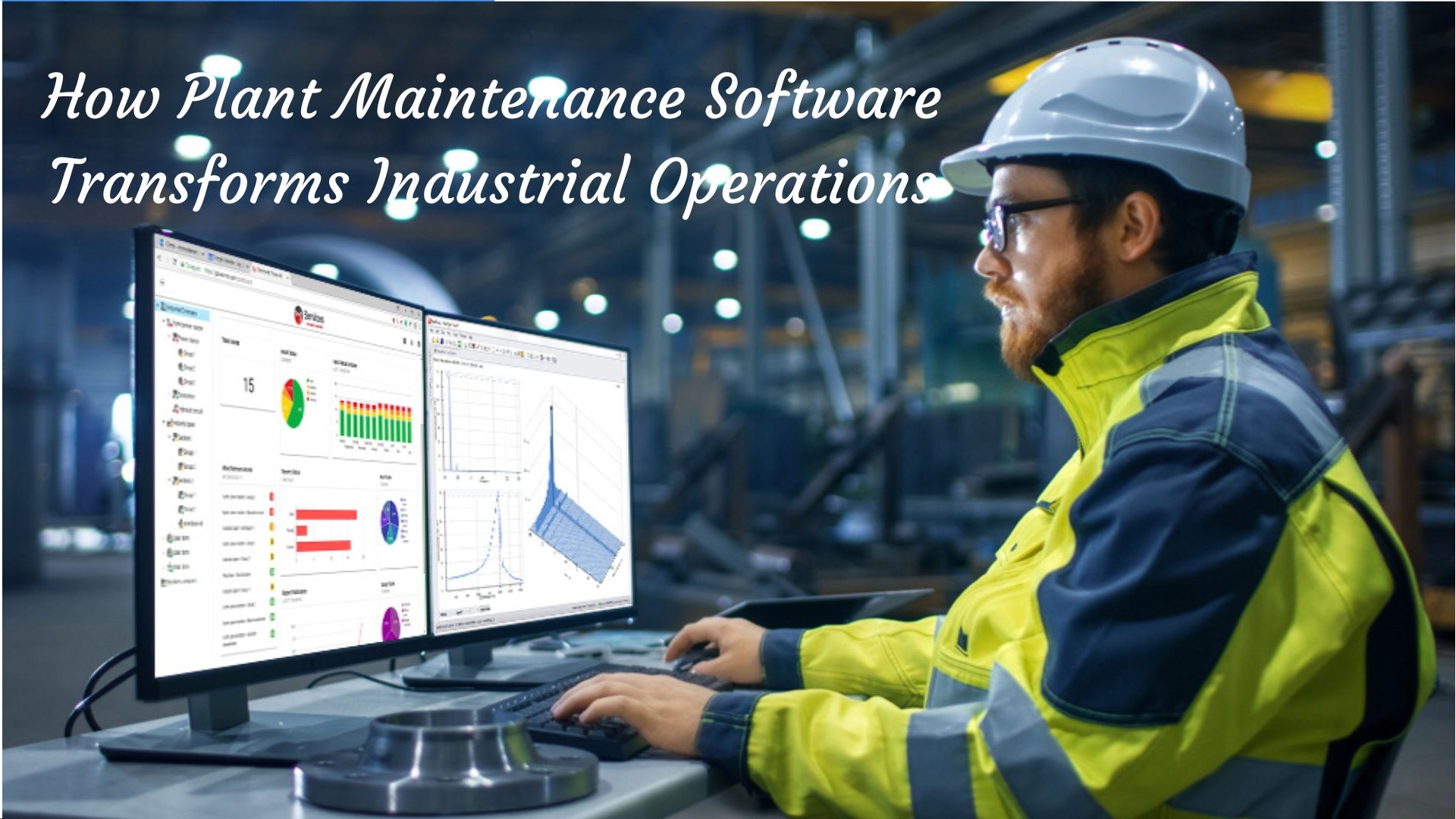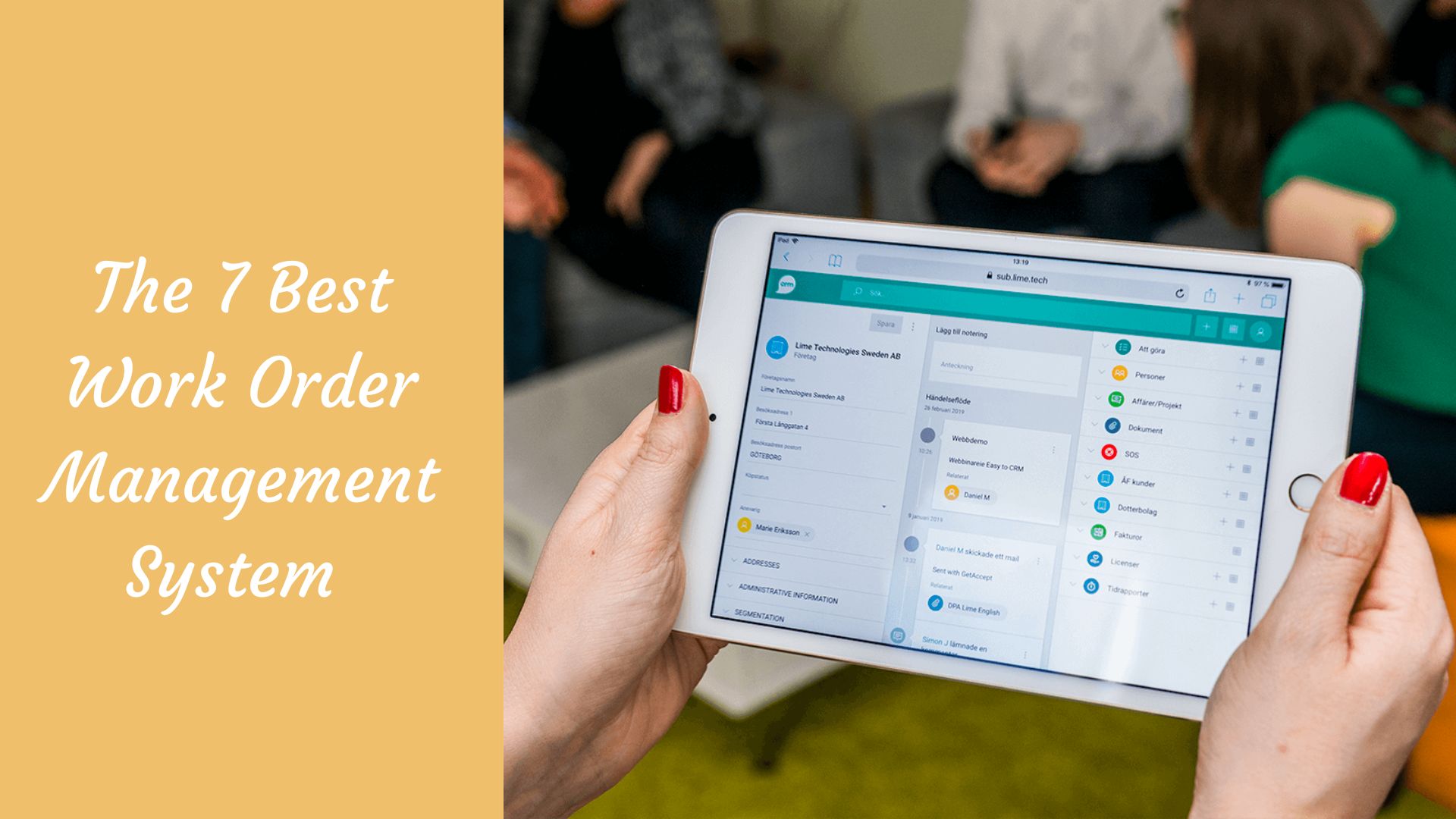
How Plant Maintenance Software Transforms Industrial Operations
Madhurima Sanyal |
09 Jun 2024 |
07:17 AM
- What is Plant Maintenance Software?
- Similarities and Difference between Plant Maintenance and CMMS
- But there are distinct differences between CMMS and plant maintenance:
- Features of CMMS Plant Maintenance Software
- Benefits of Plant Management Software
- Quality Improvement
- Production Efficiency:
- Compliance and Regulatory Benefits:
- Reviewing Plant Maintenance Software
- Conclusion

The 7 Best Work Order Management System
Kirti Prakash 22 Jun 2024 | 07:02 AMDiscover the ideal workorder maintenance system to streamline your operations. Our comprehensive guide covers the latest in task management, scheduling efficiency, and maintenance tracking to boost productivity and minimize downtime....
Plant Maintenance Management Software
What is Plant Maintenance Software?
Plant Maintenance Software, a powerful CMMS solution. It empowers plant managers in manufacturing, canneries, chemical plants, and more. The software facilitates expert work order management, crew scheduling and preventive maintenance. It also helps in asset tracking, inventory control, and tool management. Streamline your plant maintenance operations with ease with Proptor App.
Plant Maintenance Software empowers plant managers in industrial plants. It helps with work order management and schedules maintenance crews. It tracks assets and controls inventory and manages tools.
Plant maintenance software is part of CMMS. It maintains valuable plant assets. Assets are crucial for daily business. Customized software meets plant needs. It ensures efficient plant operations.
Similarities and Difference between Plant Maintenance and CMMS
CMMS and plant maintenance share several key similarities:
- Focus on Asset Maintenance: CMMS and plant maintenance focus on asset management. They track asset conditions. This ensures the best performance.
- Preventing Unexpected Equipment Failures: They help organizations track asset health. They schedule regular maintenance and prevent sudden equipment failures. It lowers maintenance costs.
- Preventive Maintenance: CMMS and plant maintenance include preventive maintenance. It's a core feature. It ensures timely asset maintenance and prevents breakdowns. It also saves maintenance costs.
But there are distinct differences between CMMS and plant maintenance:
-
Forecasting: CMMS offers asset maintenance forecasting. It helps plan and schedule maintenance activities. Plant maintenance usually lacks this feature.
-
Scheduling and Prioritization: CMMS software schedules and prioritizes maintenance work. It completes important tasks on time. Plant maintenance might not prioritize work orders.
-
Maintenance Reporting: CMMS software offers complete maintenance reporting. It gives detailed insights into maintenance activities. Plant maintenance systems may not offer the same level of reporting.
-
Checklist Creation: CMMS systems make maintenance checklists. They improve task efficiency. Plant maintenance systems may not have this feature.
Features of CMMS Plant Maintenance Software
It is a CMMS System designed for industrial and manufacturing plants. It provides a range of features to help managers streamline maintenance processes. It keeps track of equipment and facilities maintenance.
Here are some key features of Proptor:
-
Maintenance Planning and Scheduling: Maintenance managers can create corrective and preventive maintenance plans. They can create maintenance checklists for machinery, equipment, and facilities. This includes setting up time-based maintenance schedules, meter readings and alarm reports.
-
Asset Management: Proptor allows you to create equipment hierarchies and define processes. This helps manufacturing assembly lines in organizing and managing assets.
-
Cost Tracking: The system enables tracking maintenance costs by equipment, department, and location. You can also track the cost of materials and labor. This will help you to make informed decisions on maintenance budgets.
-
Customizable Maintenance Calendars: Make maintenance calendars for tasks. Think about workdays and shifts. Avoid schedule problems. Adjust for holidays and off days.
-
Work Orders: Proptor generates work orders based on the maintenance schedule. Maintenance technicians or external subcontractors can also complete the required tasks. You can print work orders, email them, and send reminders for overdue tasks. Include detailed instructions and images on work orders to reduce errors.
-
Maintenance Requests: Operators and others can request maintenance. Track requests in the system. Send requests by email. Get updates by email. Maintenance managers can review and create work orders from these requests.
-
Analytics and Reports: Proptor offers many reports. These reports share insights into maintenance work costs, spare parts usage, equipment downtime, and more. You can create customizable reports and graphs to suit specific needs. The system also includes a WYSIWYG Report Editor for easy customization.
-
Data Import and Export: You can import data from Excel or CSV files. This can save time and reduce data entry errors. Export data to Excel for further analysis.
Proptor is a useful tool for plant maintenance. It helps plan, schedule, and manage tasks. You can track costs and use different versions.
Benefits of Plant Management Software
Plant management software, such as Proptor's plant maintenance software, offers a host of benefits. Here are some key advantages:
1. Reduced Response Time for Technicians:
- The software provides technicians with timely information about maintenance needs and repair requirements.
-
Technicians receive diagnostic information specific to the reason for work. This enables them to prepare with the necessary tools and parts.
-
Maintenance tasks are set based on asset importance, reducing downtime.
-
Anticipating repairs and maintenance needs allows for proactive planning. This reduces emergency maintenance and minimizes downtime.
2. Organized and Efficient Operations:
-
The software helps in planning and scheduling shutdown operations. This saves time and resources.
-
Align resources, parts, and materials ahead of planned shutdowns using real-time notifications and automated workflows.
-
Workflows guide staff on tasks, milestones, and approvals. This ensures organized and efficient maintenance management.
3. Maximized Asset Lifecycle:
-
The software aids in maximizing the lifespan and value of assets within the power plant. It achieves its goal by managing performance and optimizing output.
-
Use AI-driven analysis and historical data to optimize asset performance.
-
Predictive maintenance helps avoid last-minute purchases and labor, reducing costs.
4. Efficient Inventory Management:
-
The software provides visibility and control over inventory, ensuring you have the right parts at the right time.
-
Improve inventory accuracy by associating spare parts with assets and work orders.
-
Automatic reorder functionality optimizes critical spares on-hand inventory, reducing downtime due to parts shortages.
5. Real-Time Reporting:
-
The software generates real-time reports on asset performance and maintenance history.
-
Customize reports to provide insights into various aspects of operations.
-
Compliance with regulatory requirements
Plant management software streamlines maintenance operations, improves asset management, and enhances facility efficiency. It helps reduce downtime, save costs, and ensure compliance with regulatory standards. The software's real-time reporting capabilities provide valuable insights for informed decision-making and continuous improvement.
Plant software, with lots of features, makes factories much better. Here's a breakdown of the benefits you can expect to see and how to achieve these outcomes.
Quality Improvement
-
Time Savings in Sanitation and Pre-op: Plant software organizes cleaning and prep jobs with proper schedules. This reduces the time required to prepare equipment and facilities for production.
-
Time Savings Resulting from On-timeLine Starts: Software helps start production on time with less delay. This ensures higher efficiency.
-
Reduced Product Holds: Software aids maintenance, quality control, fewer bad products to toss.
-
Reduced Scrap and Waste: Improved maintenance and asset management reduce defects and breakdowns. This leads to less raw materials and products waste.
-
Less Time Spent on Inspection Checks: Software makes inspections and quality checks faster and smoother, less manual time.
-
Decreased Resolution Time for CAPA (Corrective and Preventive Actions): Software improves tracking and handling of fixes, quicker problem-solving.
-
Reduced Foreign Materials: Better maintenance and quality control stop foreign materials in products.
- Less Rework: Fewer defects save time and resources, less rework needed.
Production Efficiency:
-
Increased Yield: Less downtime and better-quality increase yield, more products meet standards.
-
Improvement of On-time Shipments: Improved scheduling and maintenance mean on-time production and shipping. This makes customers happier.
-
Reduced Unplanned Downtime: Software's scheduling and predictions cut unplanned downtime, better production efficiency.
-
Reduced Overpacking and Overfilling: Good inventory and planning stop products from overpacking or overfilling.
- Less Travel Between Plants: Better coordination and scheduling mean less travel between plants, saving time and resources.
Compliance and Regulatory Benefits:
-
Fewer Hours Spent on Record Review and Sign-off: Software makes record-keeping and compliance easier, less manual review time.
-
Reduced Audit Times and RCA (Root Cause Analysis) Labor: Audits are faster with software's issue tracking and analysis. It reduces effort and saves time.
-
Less Time Spent on Adjusting to New Regulations and Certification Processes: The software adjusts to new rules and certifications.
-
Ability to Conduct Remote Audits: Certain plant software allows remote audits, less need to be there in person.
To sum it up, plant software boosts quality, efficiency, rules, and savings. It uses scheduling, predictions, quality checks, and live data. It makes factories work better.
Reviewing Plant Maintenance Software
Reviewing plant maintenance software and its place in CMMS shows its great value for support and manufacturing.
Here are some key takeaways:
-
Improved Response to Downtime Events: Plant software and CMMS help respond faster to downtime, less interruptions, more uptime and better production.
-
Enhanced Predictive Maintenance: Systems predict and prevent machine failures, analysing data and history. Proactive action saves from expensive breakdowns.
-
Efficient Resource Allocation: Software and CMMS divide resources better for planned maintenance. It uses people, materials, and equipment well and more assets if available.
-
Support for Various Departments: While maintenance plays a critical role, it is one piece of the puzzle. In manufacturing, production is crucial. But support groups like training, engineering, and quality control play a key role. They ensure smooth operations and product quality.
-
Workflow Integration Challenges: Support teams help production. They work with manuals. Use different systems and create data silos.
-
Data Silos: Different systems make data silos. It contains classified information. This fragmentation can hinder communication, collaboration, and the ability to make data-driven decisions.
To solve this, organizations can merge systems and teams for better collaboration. This can involve:
-
Use software that shares data across teams like maintenance, production, training, engineering and quality control.
-
Standardizing processes and workflows to streamline operations and improve communication between departments.
-
Adopting digital changes and Industry 4.0 with IoT and data analytics for unified data.
-
Train staff for teamwork in an integrated system.
Conclusion
The journey of plant maintenance software keeps evolving. With Industry 4.0 and IoT, it will do more. Machine learning and AI will boost predictive maintenance.
In some cases, it may be beneficial to adopt both a CMMS and a plant management solution like Proptor. You can go for a complete solution for maintenance and facility management. For big and complex facilities, using both systems works well.
Your choice between CMMS and plant management, or both, depends on your needs, facility size, and long-term strategy. Assess what suits your goals best for efficiency, less downtime, and better business performance.
If you're using either system, share your experience in the comments to help others decide.
As digital change becomes common, software integration is vital. It creates a unified data system, helping decisions and the whole value chain.
Plant maintenance software is a game-changer in the asset management industry. It's not about maintenance but production too. Predicting, preventing, and streamlining are crucial. As technology advances, more solutions will improve manufacturing.